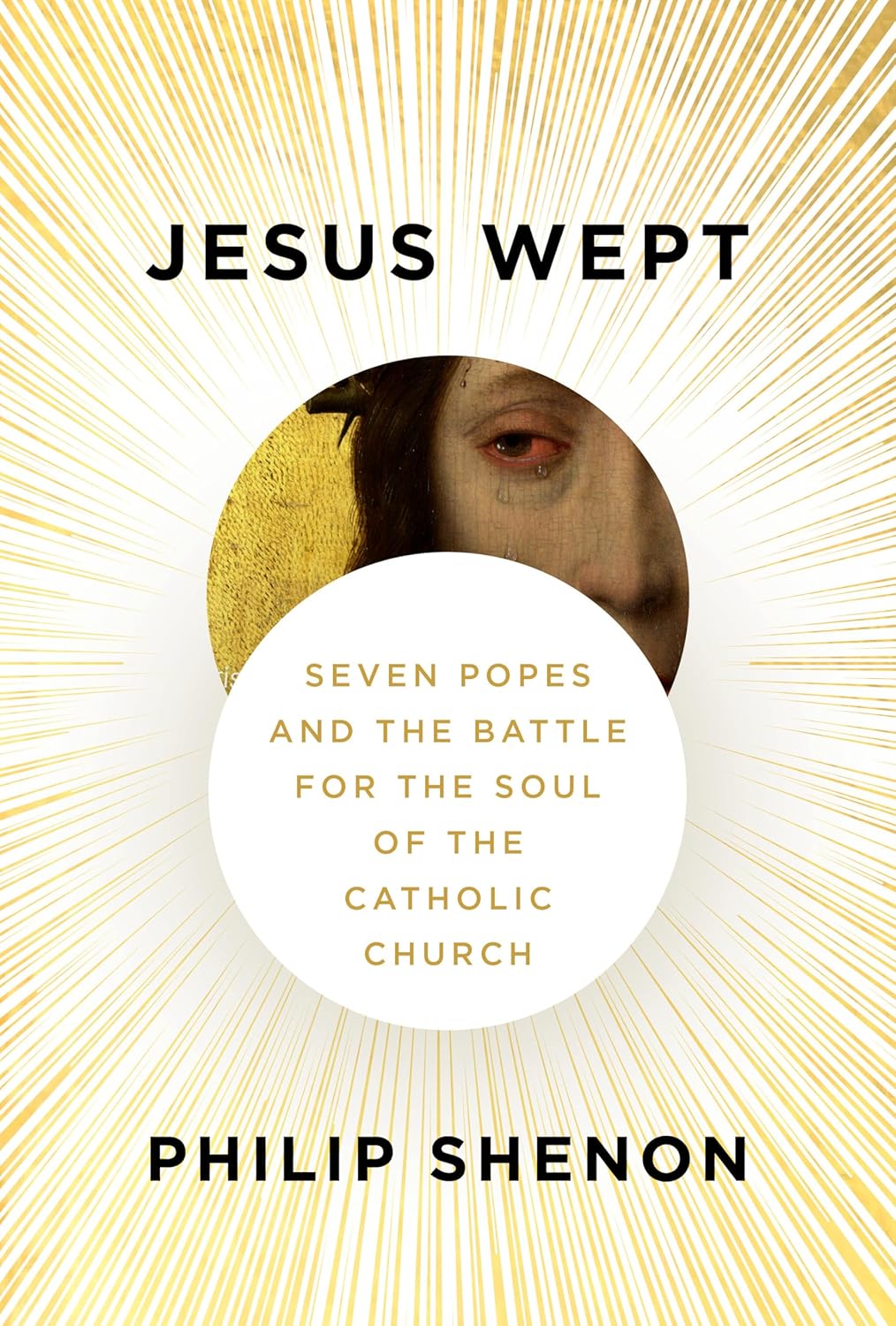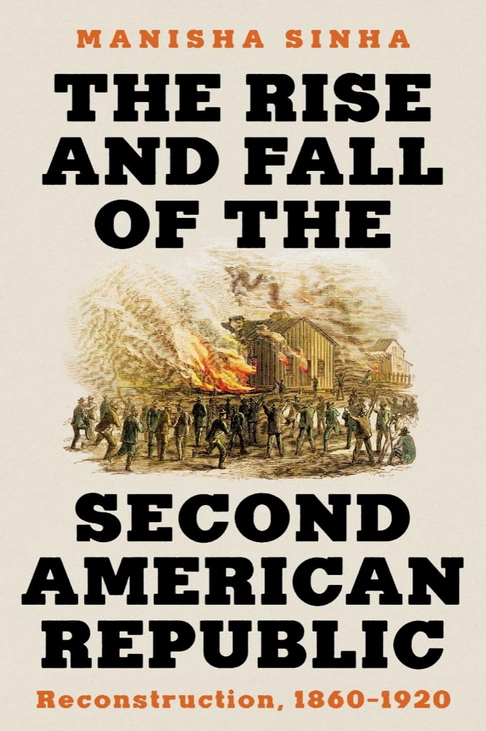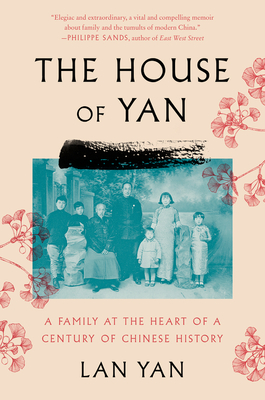Jesus Wept: Seven Popes and the Battle for the Soul of the Catholic Church
- By Philip Shenon
- Knopf
- 608 pp.
- Reviewed by Teddy Duncan Jr.
- February 13, 2025
A detailed, journalistic chronicle of pivotal, sometimes problematic clergymen.

“Jesus wept” is famously and conspicuously the shortest sentence in the Bible — it is the line that some claim distinguishes the triadic (yet monotheistic) Christian God from all other religions. Jesus presents an unsubtle disjuncture from all preceding deities: This is not a god like others who generates somethingness out of nothingness in an irrevocable cosmological move and despotically rules. Nor is Jesus a figure (like the Old Testament God) who lays out demanding laws and seemingly intractable, paradoxical injunctions (thou shall not murder; thou must murder the Canaanites).
Jesus is instead a god who weeps, a god who suffers, and a god who loves indiscriminately — and the Catholic Church was meant to be an institutionalization of precisely these Christian ideals. Yet to former New York Times reporter Philip Shenon, if Jesus incarnate returned to Earth and witnessed the modern Catholic Church — particularly the papacy and its Vatican apparatus — he would weep again.
In Jesus Wept: Seven Popes and the Battle for the Soul of the Catholic Church, Shenon details what he perceives as the moral, social, and political failures of the Vatican over the last century. He presents, in 500+ pages, a sprawling narrative of the Church centered on the Vatican and seven “bishops of Rome,” refracted through two significant figures who represent the contesting factions of Catholic theology: the progressive Hans Küng, a Swiss theologian, and the conservative Joseph Ratzinger (aka Pope Benedict XVI).
Although the book begins with Pius XII, infamous for his papal silence and even passive collaboration during the Nazi regime, its true nucleus is Vatican II and Pope John XXIII. Vatican II, the seminal ecumenical convening of cardinals and bishops in several meetings over three years in the early-to-mid 1960s, is the activating site of contention for the theological and moral disputes cataloged throughout the book. Church leaders, in Shenon’s multiple mini-biographies, are either aligning themselves with the “spirit” of Vatican II or actively protesting it.
While Küng represents the spirit of Vatican II, writing radical books questioning fundamental Church precepts and eventually prohibited from teaching in Catholic universities, Ratzinger embodies the coalescing of the Church around pre-Vatican II teachings and its rewards in the church hierarchy.
Vatican II effectuated seminal changes to the Church’s traditions and unsettled others that had seemed established as dogma. It marked a major shift on issues such as the Latin mass (Vatican II permitted mass to be held in “vernacular” — the language of a church’s country) and the Church’s sometimes antagonistic relationship to Jews and other denominations of Christianity.
After John XXIII’s death, the book’s ensuing pages chronicle the popes until today: Paul VI to Francis. Shenon captures the Church’s often fraught grappling with modernity after the unresolved debates from Vatican II — Catholic leaders contending with the social issues surrounding birth control, abortion, same-sex marriage, poverty, communism, and divorce. The vision of a hierarchical, unified Church is displaced by an entity facing mass internal dissent and cultural fragmentation from country to country.
Shenon describes, for example, how Dutch priests in the late 1960s publicly defied mandatory celibacy, with almost 2,000 signing a statement for its abolition. He also details how priests in impoverished parts of Latin America pursued “liberation theology,” challenging Church doctrine on involvement in political actions and labor disputes on behalf of the poor.
Occasionally, Jesus Wept slips into a Marvelification of events: a dramatizing that results in a too-easy binary. At other times, however, this compression of nuance is apt. When discussing pedophilia in the Church, there is a clear delineation between evil — those who committed reprehensible acts against children and insulated pedophiles from judicial scrutiny — and good (those who attempted to inform the Vatican and the media of the crisis to prevent further abuse).
Shenon adeptly recounts the well-documented cases of pedophilia and its concealment by the Church — such as the story of the now-defrocked archbishop of Washington, DC, Theodore McCarrick, who used his position to molest numerous “boys and young men,” yet continued to hold a prominent position in the Church for decades even after those around him became aware of his crimes.
Unfortunately, certain crucial theological considerations are omitted by the book’s circumventing of inner-theological discourse. When discussing topics such as abortion or priestly celibacy, for instance, the issue gets condensed to a political/progressive perspective — any Church leader not endorsing progressive ideals is depicted as a purely hypocritical reactionary or as capitulating to Church hierarchy.
While Shenon’s book is exemplary at detecting and documenting those points of hypocrisy — e.g., clandestinely gay priests publicly against gay marriage or sexually active clergy dogmatically committed to celibacy — it doesn’t always explore the underlying reasons some in the Church may oppose certain changes. These points of contention in Catholicism are (as anyone looking closely will concede) theological rather than purely political.
Despite this occasional lapse, Jesus Wept provides an impressive overview of the Catholic Church told in a neat, nuanced narrative that captures its triumphs — its charity and teachings of transcendent love — along with its abysmal failures: its censorship of dissent, inability to contend with modernity, and deliberate concealment and propagation of priestly abuse.
Teddy Duncan Jr.’s freelance writing has appeared in publications such as Observer, Document Journal, Fad Magazine, Creative Loafing (Tampa), and Document Journal; his scholarly work is in Latin American Literary Review, the International Review of Zizek Studies, the Midwest Quarterly, and Between the Species. His new book is Interpreting Meat: Theorizing the Commodification and Consumption of Animals. He can be reached at [email protected].

